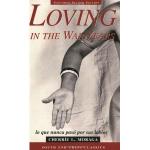
|
| Name: _________________________ | Period: ___________________ |
This test consists of 5 multiple choice questions, 5 short answer questions, and 10 short essay questions.
Multiple Choice Questions
1. What is it called when an author writes in two languages?
(a) Twin language.
(b) Duo-lingual.
(c) Bilingual.
(d) Duplicity.
2. In what faith was Moraga raised?
(a) Catholic.
(b) Methodist.
(c) Baptist.
(d) Jewish.
3. What had happened to Moraga's lover's brother?
(a) He was an Olympic athlete.
(b) He broke his leg.
(c) He was run over by a train.
(d) He got a promotion.
4. When did Moraga begin to identify with oppressed groups?
(a) When she accepted her lesbianism.
(b) When she went to college.
(c) When she roomed with a black girl.
(d) When her family became homeless.
5. Moraga belongs to both the feminist and _____________ movements.
(a) liberal.
(b) queer.
(c) Independent.
(d) Democratic.
Short Answer Questions
1. Moraga's various identities have particularly affected her life with _____________.
2. To whom does Moraga compare her friend's friend, Yves, in "For Amber?"
3. In what country does Moraga live?
4. Who is the author of these stories?
5. What was Moraga's feeling when she left her church?
Short Essay Questions
1. How does Moraga use the metaphor of a phantom limb to describe repressed sexuality in "You Call It, 'Amputation'"?
2. How does Moraga compare herself to her lover's dead brother in "No Born-Again Children?"
3. To what does Moraga compare the sensation of falling in "The Voices of the Fallers?"
4. Why is writing in both English and Spanish a form of rebellion for Moraga?
5. In "Winter of Oppression, 1982" Moraga recalls seeing horrifying images of the Holocaust but why is Moraga even more shocked to see pictures of black lynchings?
6. In "La Guera" when does Moraga say that she began to understand oppression in the world?
7. What example does Moraga give about how she, herself, is guilty of oppressive behavior?
8. In "Heading East" what imagery does Moraga use to illustrate how male-dominated society tries to marginalize women?
9. Why does Moraga say it is important for any activist to realize that oppression is not just exterior and how is the women's movement a subtle form of racism?
10. What pressure did Moraga's family put on her and what did she learn about docile obedience?
|
This section contains 953 words (approx. 4 pages at 300 words per page) |

|




